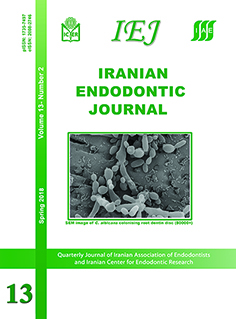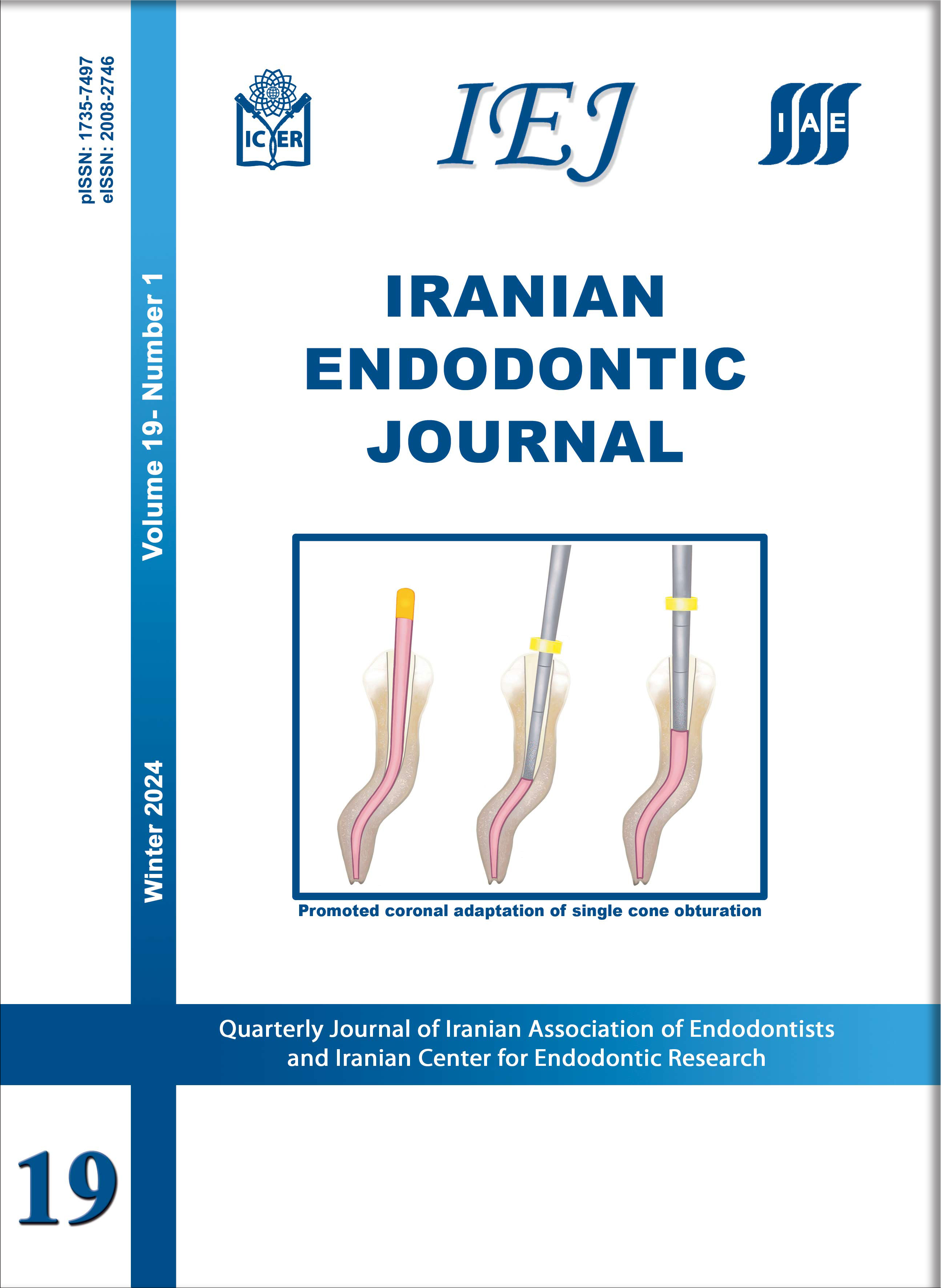Efficacy of IANB and Gow-Gates Techniques in Mandibular Molars with Symptomatic Irreversible Pulpitis: A Prospective Randomized Double Blind Clinical Study
Iranian Endodontic Journal,
Vol. 13 No. 2 (2018),
9 April 2018,
Page 143-148
https://doi.org/10.22037/iej.v13i2.18625
Introduction: The aim of the present study was to compare the efficacy of the inferior alveolar nerve block (IANB) and Gow-Gates techniques in mandibular molars with symptomatic irreversible pulpitis. Methods and Materials: In this randomised, double-blind clinical trial, 80 patients referred to Mashhad Dental School, were randomly divided into two groups: IANB and Gow-Gates anaesthetic techniques using 2% lidocaine with 1:100000 epinephrine. After injection, if pain during caries/dentin removal and access cavity preparation was reported in each group, the patients once again were randomly allocated to receive buccal or lingual supplementary infiltration. Pain severity was evaluated using a visual analogue scale. The rates of positive aspiration and changes in heart rate were compared between the IANB and Gow-Gates. Paired and individual t-tests and the Mann-Whitney U-test were used to compare the reduction in pain severity. The level of significance was set at 0.05. Results: The success rates of anaesthesia in the Gow-Gates and IANB techniques were 50% and 42.5%, respectively with no significant difference (P=0.562). Supplementary infiltrations significantly reduced pain severity in all subgroups (P<0.05). Lingual infiltration resulted in a significantly greater reduction in pain severity in the IANB group than in the Gow-Gates group (P<0.05). No significant difference in heart rate or positive aspiration results was observed between groups (P>0.05). Conclusions: In the present study, the efficacy of the IANB and Gow-Gates techniques was comparable in mandibular molars with symptomatic irreversible pulpitis. Supplementary buccal and lingual infiltration significantly reduced pain severity.
Keywords: Buccal Infiltration; Gow-Gates Technique; Inferior Alveolar Nerve Block; Irreversible Pulpitis; Lingual Infiltration




